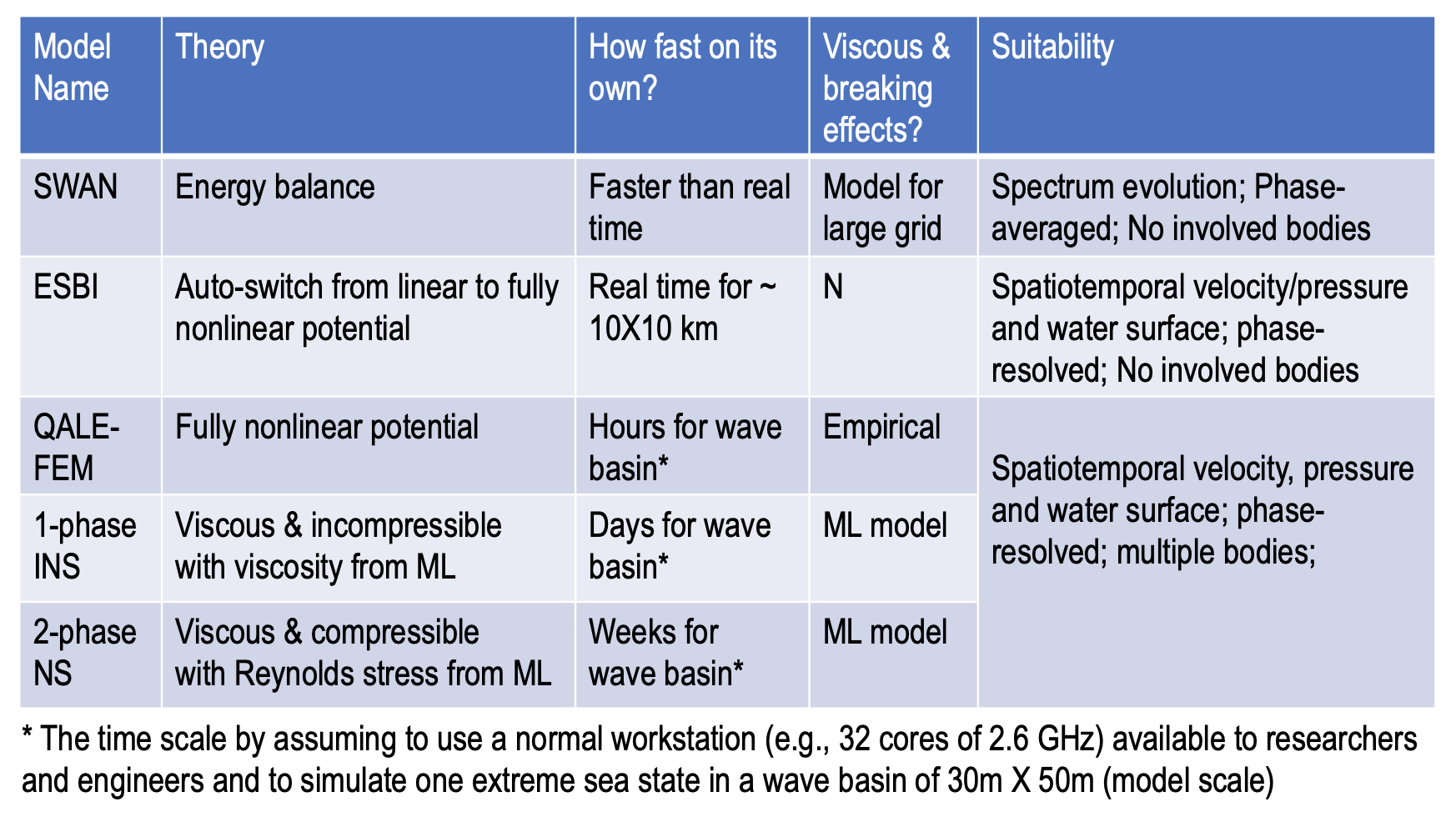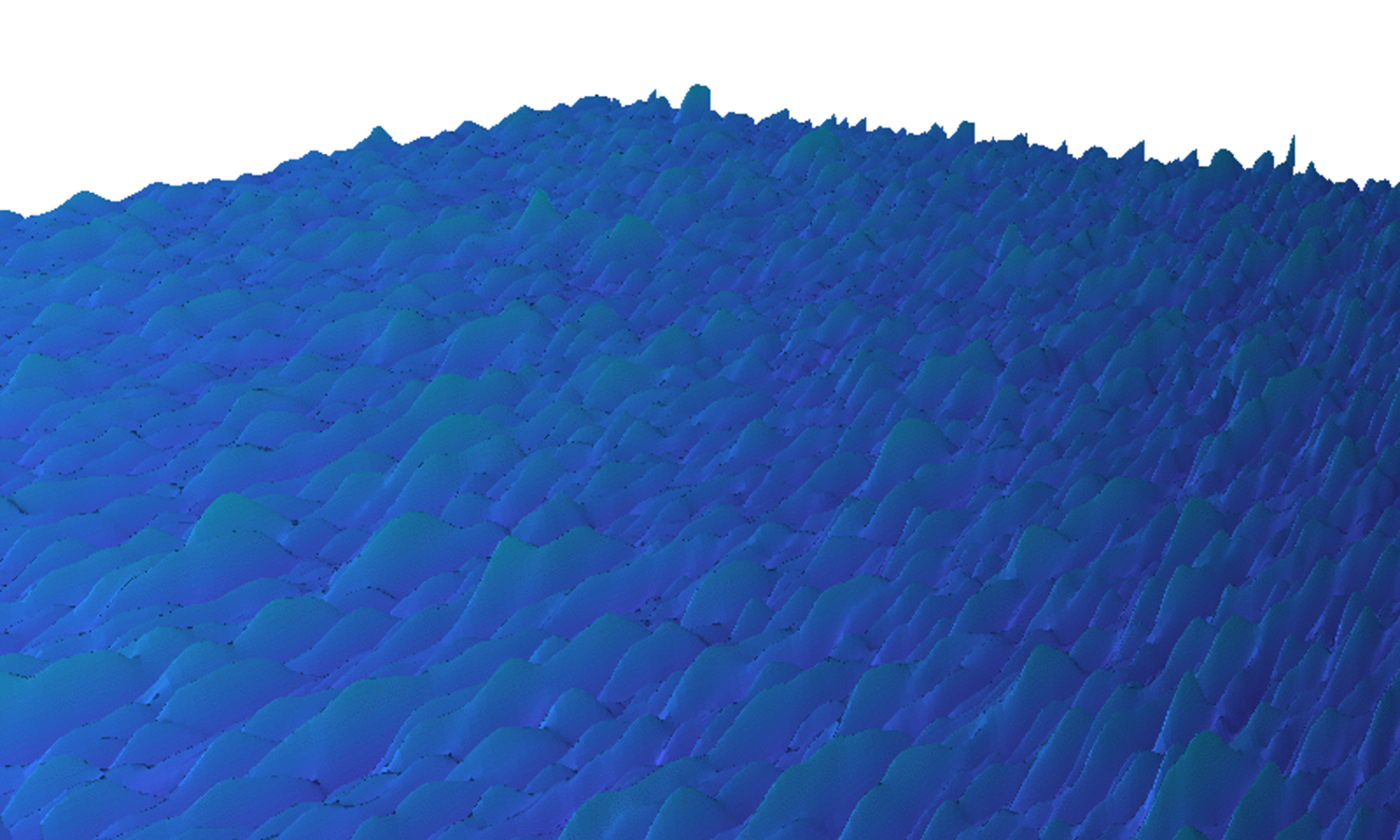Vision and Objectives
Our hypothesis is that WECs must survive extreme wave conditions, and the nonlinearity and turbulence in near field of WECs play a decisive role in survival analysis. To understand the properties of extreme waves and their effects on the behaviours of WECs, accurate, robust and efficient modelling tools are required. Our vision is to develop a new numerical modelling suite equipped with advanced machine leaning algorithms by combining five individual numerical models, which will be highly accurate and efficient compared with existing ones. The new suite will have the ability to generate and propagate irregular waves together with current and wind and is able to simultaneously capture both large and small-scale physics, crucial for WECs. The modelling suite will automatically select the suitable models for maximising overall robustness, eliminating the requirement on users to have advanced knowledge on underlying theories, making it as easy as possible for users. The new suite, after thorough validations with laboratory and sea-trail data, will be demonstrated to identify the survival conditions, quantify hydrodynamic loadings and responses of WECs and map pressure and velocity fields.
Program and Methodology
The new modelling suite will be formed by using MMS principle, coupling two-phase NS model (NS2P), one-phase NS model (INS), FNPT models (QALE-FEM and ESBI) and SWAN using a two-way hierarchical approach. The features of each model are summarised below.

The ESBI/QALE-FEM, INS and NS2P can deal with multiple bodies of WECs in nonlinear waves, current and wind, with increasing fidelity and computing costs. The robustness is further secured by introducing ML for quantifying the viscous damping of WECs in ESBI /QALE-FEM, the eddy viscosity in INS and the Reynolds stress in the NS2P using dedicated database of reliable numerical and experimental data. The models in the suite will be automatically selected according to applications and concerned physics. For examples, (1) ESBI /QALE-FEM with viscous damping of WECs is used to identify the survival conditions of WECs; (2) ESBI /QALE-FEM+INS model to quantify the loadings and responses of WECs in survival conditions; (3) ESBI/QALE-FEM+INS+NS2P model to characterise pressure/velocity fields. Switching on/off SWAN depends on the situations. If one just knows the storm conditions and/or requires the site-specific spectrum due to complex local geometry, SWAN will be on. If the measured spectra or time histories of waves are available, they can be directly input into ESBI and so SWAN is off. The suite can maximise the advantages of each model and minimise their disadvantages, achieved by minimising use of the time-consuming NS models in a small domain near the WECs, only when necessary, i.e., where viscosity and wave breaking effects are crucial. PTO (power take off) of WECs and mooring systems of floating WECs must be considered. However, developing new PTO and mooring codes are not our focus. Instead, reliable models available in the public domain will be ported into the suite, e.g. the nonlinear hydraulic PTO and open-source mooring code MoorDyn. We will provide guidelines and interfaces to import additional user-defined PTO and mooring models.
Although the idea of model coupling is not new, the novelties of the project are clear and reflected by:(1)Two-way coupling of full ranges of multi-models from large-scale spectrum evolution model to small-scale NS2P, with auto-switch to select appropriate models for different levels of fidelity resulting in a higher efficiency than existing hybrid models combing only two models; (2) Transformative way for better user experience. Owing to the unique feature of ‘auto-switch’, the users only need to specify the input conditions and the tasks of analysis. (3)Adopting ML algorithms, eliminating the necessity of solving equations of turbulence and advancing on ML applications from simpler cases without waves to the problems for WECs within the MMS framework; (4) Unique database for WECs to overcome the challenges of insufficient available databases for WECs (limited data just found at https://openei.org); These innovations will be achieved by 5 collaborative work packages (WPs), logically connecting and supporting each other

